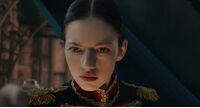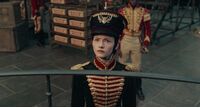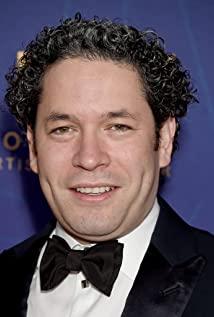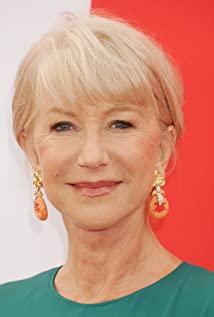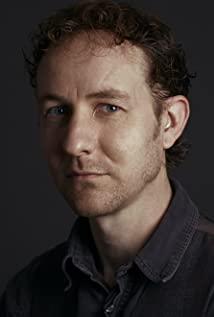"The Nutcracker and the Four Realms", which was released in mainland China on November 2, 2018, is another great offering of Disney's live-action fairy tale movies. As a huge Disney fan, I naturally brought my daughter to enjoy an audio-visual feast in the hall of the 3D movie.
Regardless of the original, let's just pretend that The Nutcracker and the Four Realms is a whole new fairy tale. However, based on my years of study and research on mainstream psychology schools such as psychoanalysis, family therapy, and humanism, I can't change the habit of analyzing movies from psychology. Today's movie viewing and analysis are quite Meaningful because my daughter is by my side.
The core plot of psychology movie viewing
The story begins with the heroine Clara and her brother Frieze catching mice in the attic. The way of catching the mouse is very special, using various furniture objects in the attic to form a chain reaction of physical dynamics and finally catching the mouse, which is Clara's special skill.
Today is Christmas, Clara's mother should die soon (I don't know why), my father hopes that the three children can get out of the grief of losing their mother and return to a normal life as soon as possible, so I took out the deceased mother at Christmas Eve and gave it to the three children Christmas gifts: eldest daughter Louise - mother's favorite gorgeous dress; second daughter Clara - a delicate silver egg with marble locks; youngest son Frieze, a beautiful group of British soldiers, and asked the children Let's go to the Christmas party at the Godfather's house.
Clara felt that Dad didn't seem to take Mom's death as important, less sad and less collective mourning. He actually went to the godfather's house for Christmas and danced with her. She couldn't understand her father's thoughts and actions because she was anxious to see the godfather because she knew that the godfather could unlock the marble lock. In the godfather's luxurious basement, Clara helps the godfather repair the mechanical toys, once again demonstrating Clara's physical and mechanical talent inherited from her mother.
The godfather looked at the silver egg and told Clara that it was his own adoption of an orphan, Mary, Clara's mother. Because Mary was an orphan, when she first saw Mary, she was closed. Because of the appearance of this egg, Mary recovered from a state of complete sadness and isolation, but the godfather said that he did not have the key. Clara goes back to the hall to look for Christmas presents and clashes with her father. Because the father wanted to dance with his two daughters to celebrate Christmas and overcome the trauma, Clara's disappearance made the father angry, asking: "You can't always think about yourself!" Clara asked: "You too You can't always think about yourself!" The two fell out.
Clara follows the gift rope left by her godfather and travels all the way to a whole new world. In the new world, she learned that this is the fairy tale world created by her mother Mary. Mother Mary is the queen of this world, and she is also the princess. People in this world use the life-changer invented by their mother to turn toys into living people. There are four kingdoms in this world, namely the kingdom of flowers, the kingdom of ice and snow, the kingdom of candy and the playground. At the same time, I met the Nutcracker soldier Philip, the Sugar Plum Fairy and others, and together they went to defeat the ginger mother to defeat the Queen Mother. A series of stories that happened to save the world.
In the end, Clara resolved the inner conflict through such a journey, returned to the real world and reconciled with her father, listened to the music of the first dance that her parents danced, and danced to live.
Psychological analysis of the first layer of film
Watching movies from a psychological point of view will always be different.
The first thing the film makes me see is a daughter who has lost her mother initiates a series of defenses to get through the traumatic period after the loss.
Clara's mother died. Clara's reaction appears to be in the second stage of the five stages of grief - anger. She couldn't understand why her family and her father let go of her mother's death so easily, so with a sigh of relief, she frequently clashed with her father and her family. She needed an outlet, a process to help her get through the initial process of losing her mother.
So there is an incredible world that is a subconscious world of the protagonist Clara. In this world, every character, event, scene, etc. that appears is just Clara's inner process of grief and loss.
The Nutcracker Soldier Philip - is the inheritance of her mother's legacy, and the core sub-personality of Clara's most struggling and most supportive. "I always knew my position." Even when there was a conflict with Clara and misunderstood, Philip still supported Clara. What is particularly interesting is that when Philip opened the floodgates of the Christmas Forest and the Bridge of the Four Kingdoms, he opened a lot of switches, and finally only opened a simple floodgate, just like Clara herself added a scene to herself in the process of mourning, just for the sake of Prove your central importance to mom and family. In addition, Philip reasoned with Clara and encouraged her, only to say a bunch of correct nonsense. The second time he tried to "encourage" Clara, Clara refused. Although Clara had emotions, she Only from the interaction with the sub-personality, Clara gradually grew up in self-talk - need to face herself, when faced with grief, a single encouragement is ineffective, it is really not brave enough to face herself.
Sugar Plum Fairy - Clara "Dark". This is Clara's emotions and mechanisms of anger, abandonment, isolation defenses, etc., triggered by the loss of her mother. After experiencing loss, people will enter five stages of psychological development, in order to finally overcome grief and achieve inner balance.
The five stages are:
1. Denial. deny the facts of the matter. I don't want to admit that it happened to me.
Two, anger. Why does this happen to me, why me? Even blaming others and imposing emotions on others.
Third, bargain. Negotiate with God, or make a deal with the devil, to change the state of loss and helplessness.
Fourth, depression. It felt like the last straw overwhelmed me. Compromise with the loss, and begin to be depressed and give up on oneself.
5. Accept. It is also called walking out of grief, getting help, looking forward, out of grief, facing the facts, becoming stronger, and accepting life.
The existence of this sub-personality is very important, she is an important process and stage to help Clara through grief, and in the end, the only person who can help her through grief is herself (Clara herself changed the mechanical line of the life-transformer, put the Sugar Plum Fairy back to a toy). Fortunately, there are family and friends on the road to repair grief, such as Nutcracker Soldier Philip, Ginger Queen, Ice King, Flower King, Mouse King, and in real life there are Dad, Louise, Frieze and Godfather.
Godfather - the "wise old man" part of the sub-personality, the appearance of Clara's sub-personality is an important sign of personality growth. Jung's interpretation of the archetypal imagery uses the term wise old man to describe the mental energies of meaning and wisdom within us. When we encounter difficulties in life, our subconscious will always develop such an old, mature and stable old man with collective subconscious wisdom to guide our own thoughts and life. For example, Master Red Panda in "Kung Fu Panda", Master Yoda in "Star Wars", Professor X in "X-Men", etc.
Queen Ginger - Everyone in the fairy tale kingdom says Queen Ginger is bad and bad because Queen Ginger is the voice of Clara's deep-seated sadness. This sadness used to be an amusement park in the Four Kingdoms, a place of happiness, but because of the death of my mother, the happiness collapsed first and became a desolate wasteland. What the Queen Mother Jiang represents is Clara's real and rational self who subconsciously knows that she will need to face her grief one day. Although this sadness is full of wounds, only the doll clown, the circus, the mouse king and other happy partners are accompanied, and it is also suppressed by those defense mechanisms (the kingdom of ice and snow), escape (the kingdom of flowers), isolation and reverse formation (the kingdom of candy) ) excluded, regarded as an outlier, but always insisted on the belief of facing oneself bravely and not escaping.
Father - the part of Clara's subconscious that functions in reality. Even through trauma, real-life engagement is always a healing medicine.
Of course, there are other characters with different symbolic meanings, such as the mass production of aluminum soldiers - the isolation mechanism created by anger; sister Louise - the part who subconsciously identifies with her mother's external image and social function inheritance; brother Frieze ——The existence of the "I" attack drive and the projection of the Animus in the Clara archetype; the mouse king—the shadow part in the archetype, both good and evil, contains huge energy and is also an important process of psychological integration.
After analyzing each character like this, the reality that I can imagine may be: a little girl who lost her mother, sits in her godfather's basement on Christmas Eve, takes the Christmas gift her godfather gave her - a marble lock key, and opens it. Mother's relic - a silver egg. After opening it, the daughter found that it was a music box, and there was a mirror where she could see herself. The mother left a sentence: "Everything you need is here." The daughter saw herself in the mirror, with the shadow of her mother, and thought about a lot of things, about her mother, about herself, about loss, inner courage and sadness Painful fights, and finally thought that there are so many people around, we should cherish the current relationship with my father. Maybe there were little mice running around during the period, and the little girl also included the mice in her restoration image. Through this process of self-clarification, she bravely walked out of the basement, took the light that her mother left on herself, and went to dance that Christmas Eve dance with her father.
Psychological Analysis of the Second Layer of Movies
The interesting part about the movie is that on the one hand it seems to be acting out a story, while on the other hand it is actually acting out to the audience in front of the screen. Aside from the assumption that the various parts of the story itself are made up of the subconscious mind of the protagonist, let's look at the film from a different angle and see the true charm of the film.
That is, for a good movie, the viewing process is the process of inner healing and growth.
In the play, Clara said sincerely to Fairy Sugar Plum: "Mom didn't abandon us, she loves us, you see her shadow on us." The hearts of the viewers whose hearts are broken by the mother.
Psychoanalytic theories agree that grief is at the heart of development, which always includes both "gain" and "loss". We all have the same experiences in our lives, deep or shallow, with the same storylines. Movies often speak the language of the subconscious, in which the characters' feelings, words, relationships, etc. are closely connected with our spiritual reality, and they influence each other, becoming a friend of our personality, pattern, psychological power and other development, helping us create a subconscious world, And we will eventually find moving, warm, empowering moments and fragments in movies.
Appreciate the follow-up
After the movie ended, the lights in the theater came on, and my daughter and I were still reluctant to leave. We had a lively discussion about the metaphors of the characters and episodes in the psychological world.
I was full of emotion as I talked about Sugar Plum Fairy and Mother Ginger's journey of growing up on both sides of grief, while my daughter was excited to explain the mass-produced aluminum soldiers and defense mechanisms, and I said Louise, My daughter said about Philip.... Gradually, everyone was gone, and we completely forgot that the movie was over, and the discussion couldn't stop at all.
I actually forgot that the girl in front of me was only 11 years old. Her understanding and thinking about psychology were far beyond what I could imagine.
I hope she remembers a moment like this, where she can consciously link to the subconscious message in the movie about how to brave the loss of her mother, and let the movie and me by her side give her a lifetime of energy.
And I will mark this moment in the beauty of life. In the theater that day, my daughter is shining!
Regarding movies, the benevolent sees benevolence, and the wise see wisdom. The angle of watching movies from psychology is always a new and interesting perspective, and I would like to share it with you.
View more about The Nutcracker and the Four Realms reviews




